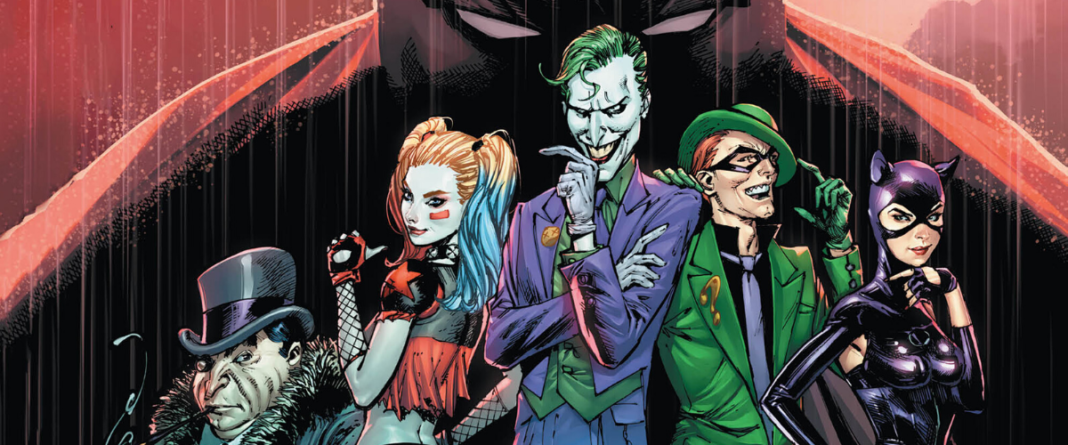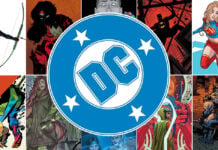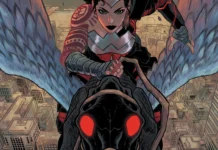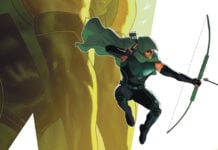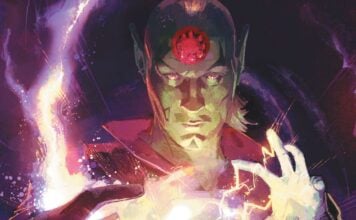James Tynion IV has had quite the year so far. In addition to helping Scott Snyder tell the biggest Justice League story in years, he’s also begun his run writing DC’s flagship title, Batman. He’s no stranger to Gotham, however. He’s been involved in writing Batman in some capacity since his first published comic, a back-up story in Batman #8 back in the New 52 almost eight years ago. There was never any question if he was up for the job; the question I had was what new elements he would bring to the table.
I don’t think anybody expected how popular some of his choices would be. I had the chance to talk to James about his current run on Batman, how he co-created the characters Punchline and the Designer, about why people dig the Joker, and so much more.
The Beat: You’re introducing a new element to Batman’s rogues gallery, a character called Punchline. She debuting in this week’s issue, #89. What can you tell me about her?
James Tynion IV: She has what they refer to as a “partial appearance” in #89, she’s in some of the last pages there. You see her observing the scenes, and then we see her in full in the following week’s Year of the Villain: Hell Arisen #3. Then we’ll be seeing her step much more onto the centre stage in the main Batman story as it develops and moves forward.
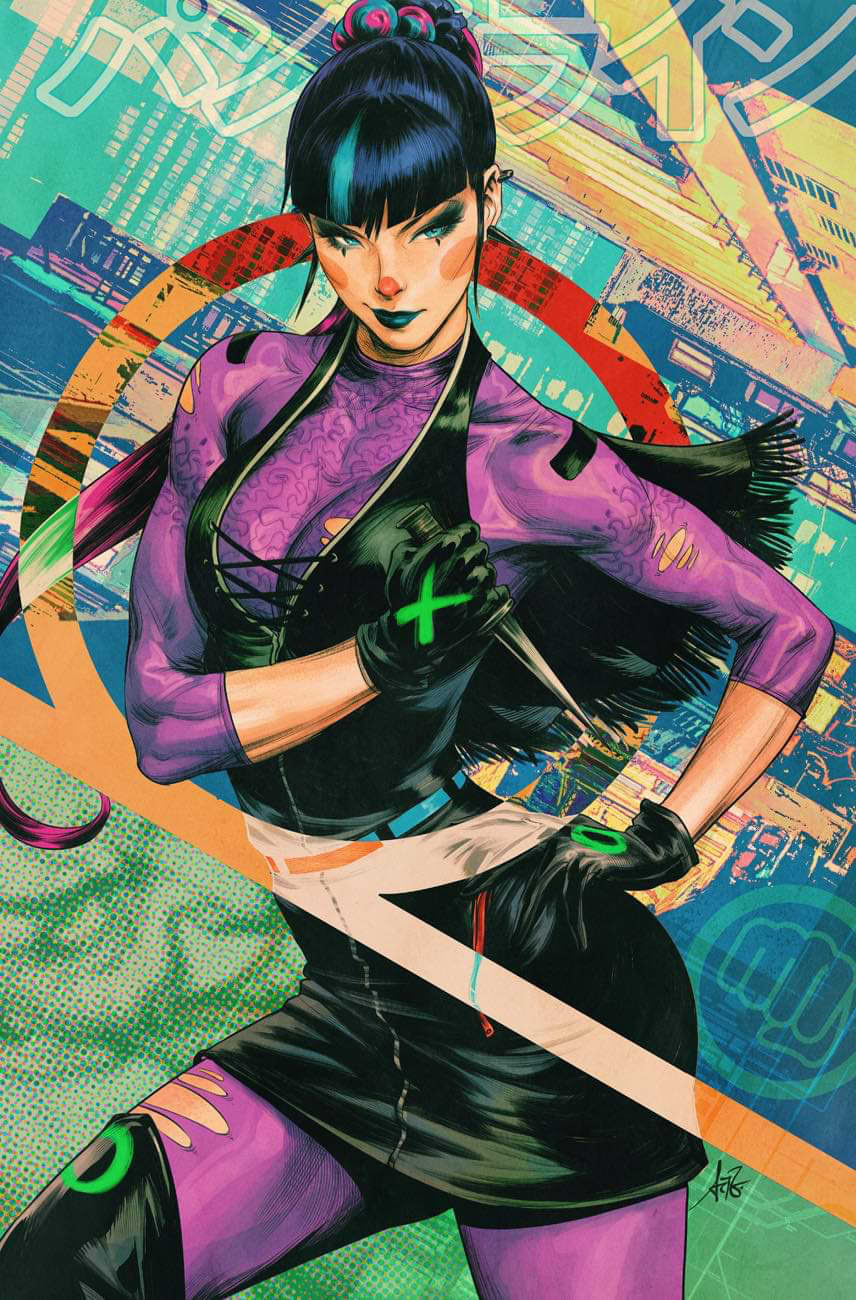
The Beat: I’m sure all the crazy collectors will have a field day with that slight distinction. Where did this character come from, and how does she factor into the story?
Tynion: There were a handful of things going on. I knew that even though I was playing with a bunch of familiar villains, I always like to throw a few toys back into the toybox. I’ve always loved doing that. You always hope that you can create something that might be able to catch fire and people want to carry forward, to let other people play with and work with in the future. The specific path to Punchline was that I started writing the codas to Batman #85 and #86 that start beating the drum toward “Joker War.” In doing that, I brought back a trope that we honestly haven’t seen with the Joker in a while. Since the start of the New 52, the Joker has operated solo. He hasn’t had a gang and he hasn’t had henchmen. I started writing scenes where Joker had these clown-masked henchmen that were helping him do really horrible things. We don’t fully know what those clown people are doing at the end of #85, they’re filling teddy bears with razor wire. Who knows what the hell Joker’s up to with that one? I realised, “Oh, I really, really love this dynamic, but there’s a figure missing.” And the figure that’s missing is the chief henchman, the number two character. And obviously, Joker has one of the most iconic, top henchmen of all time in Harley Quinn. But Harley has evolved to the point where it would be extremely regressive to pull her back to a position that she hasn’t been in for twenty years. That raised the question in my head, if I want a new number two for the Joker heading into this big story where I really want to peg the dangerous underboss to the main boss of the story, how can I create someone new who can be a great foil for Joker, be a great foil for Batman, and be a great foil for Harley who I was starting to realise would play a big part in my year? At the nexus of all of that, I started pulling together images of who this character would be. We had just gotten in Jorge Jimenez as one of the artists that I’ll be working with on this run, and specifically in the big “Joker War” story we’re doing this summer. We didn’t have pages ready for him yet. So I said, “Hey Jorge, I have this idea for this new character and I’m still determining the size of her role in this, but I think we could do something really cool and really special.” I started laying out how I saw her in reflection to all these characters around her. I’d landed on the kind of description where if Harley was the twisted angel on Joker’s shoulder, Punchline is the devil on the other shoulder. That helped shape her, and then when Jorge gave the design, Ben Abernathy, the editor of the book and I were just like, “Holy crap. She looks freakin’ awesome!” On top of that, I was working on Hell Arisen #3, which is a big Joker issue, and I added Punchline in there. Now I have the character who I can start seeding as she’s following the characters through the main Batman story, and then the character who’s going to lead into and pay off in a big way in “Joker War.” So it was a very natural progression. Sometimes at DC or any big creative corporation, when you want to throw a new idea in the mix, they want to kick the tires and test it out. Thankfully, with Punchline, there was an immediate energy to the idea and everyone got behind her really quickly, so we were able to move really fast. It helps that I was writing all the books, so I could just stick her in wherever I wanted. Ultimately, it also pays off in the Joker 80th Anniversary Special; I’m doing a story with Mikel Janin that will tell the origin of Punchline. I’m very excited for that one. My Batman run has been very big, bombastic, everyone in costumes and punching each other with vehicles, but this story is going to be a tighter thriller, something a bit closer in tone to what I’ve been doing in my indie work with Something Is Killing the Children.
The Beat: You’ve already introduced some new characters into your run, them being Mr. Teeth and Gunsmith. What is it about Punchline that immediately sets her apart from those characters? Readers seem to be excited about her in a way that I haven’t seen in a long time. You’ve already got people cosplaying as her.
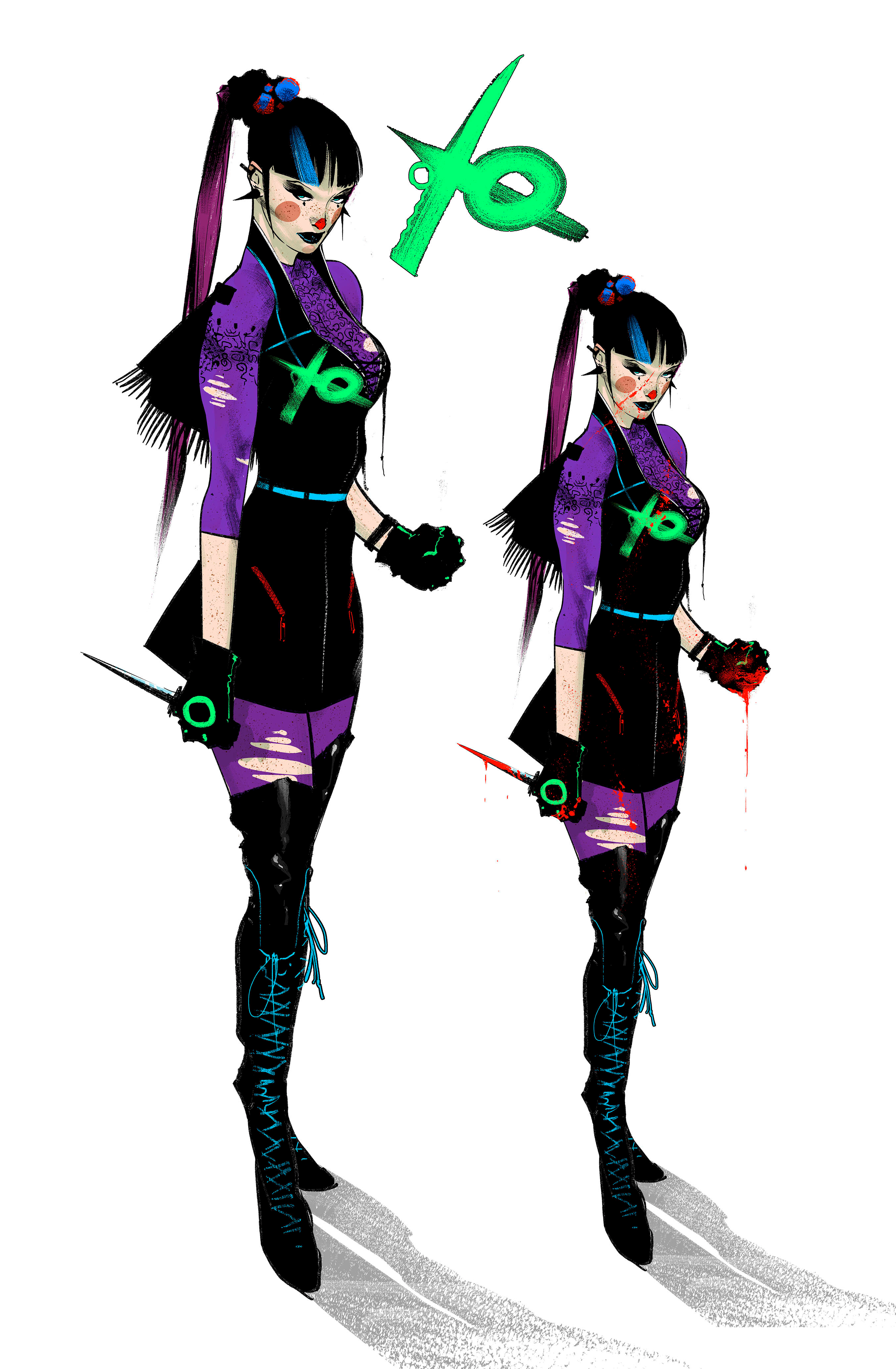
Tynion: I was just looking at Instagram earlier today ever since Jorge brought it to our attention. It’s been really exciting. I think there are a few things. Obviously, we’re at a moment where both the Joker and Harley are big in the public consciousness as well as the geek consciousness in general. We just had a Joker movie make a billion dollars and win an Oscar, and a Harley Quinn movie is out in theatres right now and it’s really good and if people haven’t seen it they should go see it. I think Gotham’s murder clowns are on everyone’s mind, and there’s something very base and untapped in the people around Joker who are inspired by him. There’s something scary about the Joker that people genuinely are really drawn to, and I think that’s something that I see a lot in the tweets I get every day. I think there are people who see him as a relatable character, which can be a little scary, and there are people for whom he is a devil of fiction who is the absolute worst of us.
The Beat: He’s Dracula-esque.
Tynion: Yeah, exactly! People are drawn to that, they’re drawn to the imagery of him, they’re drawn to the idea of chaos that he represents. There’s real power in seeing how people are swayed by him, who are working at his side. The only other character in the DC lore who is tied to him in that way has so thoroughly rejected him, that a new character who’s come up and embraced him has an energy to that, even if readers haven’t seen it play out in stories yet. There’s also the simplest answer of all, which is that Jorge drew an amazing character design that people want to cosplay. I’m very, very excited to see some Punchlines show up in real life as my convention season gets started.
The Beat: Your predecessor Tom King had a really personal and romantic perspective on Batman and Catwoman’s relationship. Since she features prominently in your run so far, I’m curious as to what you think of their relationship and her place in a post-Alfred Gotham?
Tynion: I think Catwoman is one of the greatest characters in all of the Gotham mythos. I absolutely love writing her. She is up front and centre in this arc. The thing that I find the most interesting of her relationship with Batman is the draw towards someone who has had this darker path in life than him. There are other people similar to Catwoman that he would not be as forgiving towards. He would not turn the other way and look away from their crimes, but Catwoman helps him cut through and see something more deeply human that breaks some of the firm, hard and fast laws of his war on crime. I think that their relationship is incredibly powerful. It’s a very powerful relationship to write. That’s how it exists on the page, but I will say it’s difficult stepping in to a run that has anchored itself on that relationship, especially knowing that there’s another comic coming down the road [Tom King and Clay Mann‘s upcoming Batman/Catwoman miniseries] that will continue the ideas of that relationship and carry them forward in a way that Tom was looking at. I definitely wanted to come at it from my own angle, which is why I wanted to explore the more villainous side of her. Not so much in the present day, but specifically the fact that in the early days of Gotham, she was running around with characters like the Penguin and the Riddler and the Joker. The idea that she would have been a part of some of the big schemes in the beginning. Back when the stakes were a little bit different in Gotham. So it’s not like she did some deeply horrifying things that are going to shock Batman to his core, except for the fact that she still kept some of those things from him. Because she is still worried about where is the line of which this part of him that has these hard and fast rules will cut in and shut her out. I think that that worry is very present in her. Working with and around that relationship, which is one that I do deeply care for in the comics, and delivering something that the people who respond deeply and powerfully to that relationship as well as the readers who were not big fans of that relationship is a kind of fun two-step that I’ve been trying to dance in every issue of the book. To be perfectly blunt, I want to write a comic that both of those two camps love. In doing that, I think that there are aspects to the question that I would rather readers read my work and answer for themselves.
The Beat: And one of the things that Catwoman’s kept from Batman is that she worked with the big bad of this arc, the Designer, all those years ago. Where did this character come from?
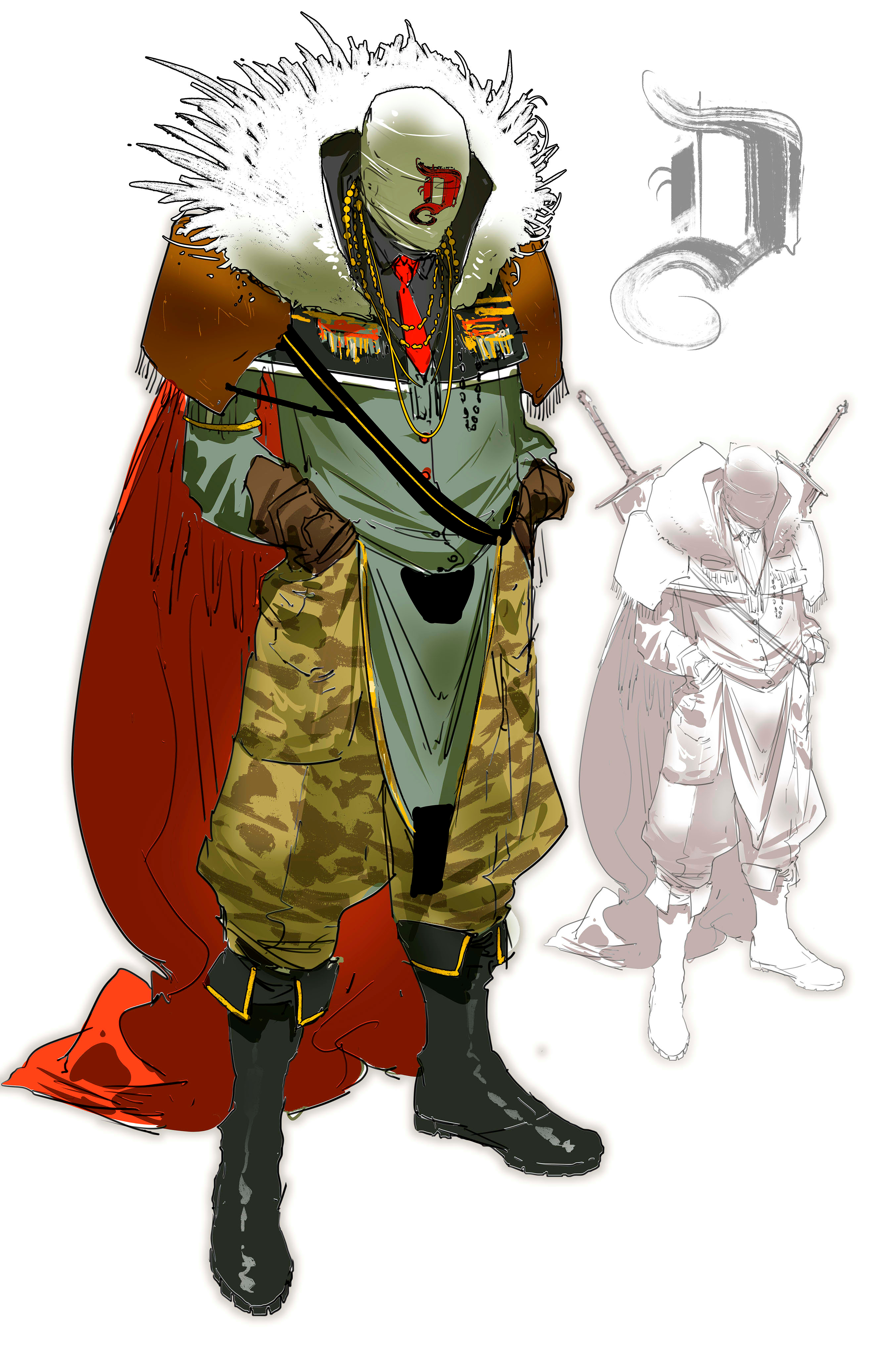
Tynion: He’s a really interesting one and I’m excited for people to meet him, particularly in #90, which is the first issue that Jorge did the interior art for. That’s the issue where he’s going to take centre-stage and we’re going to understand what happened way back when. It allows me to cut into the past of Gotham City. Part of this whole story and the idea of the designs of these very complicated crimes is the idea of how Gotham has become convuluted over the years. How is the Joker that’s running around and ultimately participating in “Joker War” the same guy who, at the beginning, was running around doing clown-themed crimes and just robbing banks? What is in the nature of the superhero/supervillain dynamic in Gotham City that leads to this escalation? The Designer, as a villain, represents that escalation. He uses escalation as a weapon. The core concept that people will find out is that he believes that the way you defeat your heroes is that you need to jump to the type of attack that you would make against your hero ten years from now, but you need to do that attack today. He supports all of these characters basically convuluting themselves and becoming a more complicated version. It’s the pull between their simple core and their more convuluted present. There’s a balance between the early days of Batman and the present-day Batman. There is a story reason as to why this story has five assassins running around, with Riddler and Penguin. There’s a lot of noise happening, and the noise is a deliberate attempt to break Batman. He needs to understand what’s happening simply at the heart of all of this if he’s going to survive. Then we’re going to see what happens in the wake of all of this, which obviously leads to “Joker War,” coming out this summer!
The Beat: Speaking of, is there anything you can tell me about “Joker War” now that the May previews have been released?
Tynion: There’s one very big thing that happens towards the end of my first arc… that I’m not sure I can say just yet. We’ve been seeing all these incredible tools that Batman has at his disposal. Wouldn’t it suck if somebody got their hands on all of the same tools that allows him to print Batmobiles in an hour? It’s one of those things where they’re going after the resources of Batman. The munitions of “Joker War” are the same munitions that Batman built to fight his war on crime. It’s Batman’s designs used against him, ultimately. That’s one of the key ways that “Joker War” builds out of “Their Dark Designs.” I see them all as different acts in one big story I’m telling that I hope reads pretty smoothly as one singular thing. Obviously, the story about the Designer will come to an end but will lead directly into the next act of the story.
The Beat: Lastly, you’ve been involved in the DCU in a grand capacity through your work in Justice League in recent years. Do you think that looking at the DCU from this epic, cosmic perspective helps you hone in onto the gritty and human nature of a Batman story?
Tynion: I absolutely do. I’m very glad that I’ve spent the last few years doing big, cosmic insanity in Justice League and Justice League Dark where I was dealing with the magic apocalypse of the week. As I moved down in scale towards trying to attack a character’s heart more than trying to attack their reality, it’s a refreshing perspective but is also freeing because I’m coming back down to a level where I’m trying to get at very human ideas, but I still want to bring the bombast and the joy of anything is possible in a comic book. That is something that I think can get lost when you’re trying to tell a very human, emotional story. There’s an impulse to make everything around it smaller and more realistic. I think that can be powerful and effective from story to story, but I think ultimately, people are coming to superhero comics for larger-than-life fiction. They want the deep emotions but they also want the costumes and the toys and the supervillains and the tropes of superhero storytelling. There’s a way to strip all of those down to their core essence. It was me laying out all the livewires that I see laying around the Gotham mythos. I want to pick them all up and plug them in together and just jam them into this story. I want people to enjoy every single issue, to make sure that every issue shows you something that you haven’t seen before and has moments that you have fun reading. Even when profoundly dark and emotional things to our characters, I want you to leave having gotten something that you haven’t gotten out of a Batman comic before, to make you want to read the next issue. That’s our job in superhero storytelling, to deliver that kind of story. There’s room for all breadths of story, especially in a year where we’re already seeing announcements of how big a year this is going to be for DC. There’s a real question of how do you convince a reader to spend eight dollors a month picking up Batman comics when there are larger-than-life stories happening in every corner of the DC universe and at other companies as well? To do that, I think you need to give them something worth buying twice a month. That’s why I want to create new characters, new vehicles, to bring back the old stuff that people deeply care about, try to show it to them in a new way, and have a hell of a time doing it. That’s the spirit I’m trying to bring to Batman.
The newest character in the Bat-mythos, Punchline, debuts in tomorrow’s Batman #89 by Tynion, Guillem March, Carlo Pagulayan, Danny Miki, Tomeu Morey, and Clayton Cowles. We ran an exclusive preview of the issue that you can find right here.

